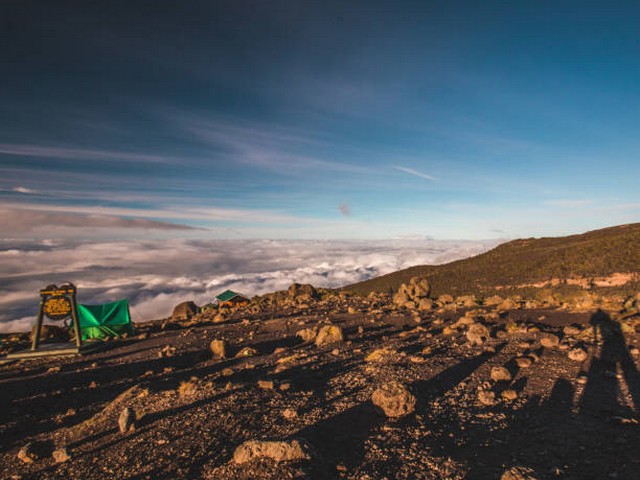How To Recognize Altitude Sickness Symptoms On Kilimanjaro
Scaling Mount Kilimanjaro, Africa’s highest peak, is a journey that captivates the heart of every adventurer. The allure of conquering its majestic summit, Uhuru Peak, draws thousands of trekkers from across the globe annually. However, the journey to the roof of Africa is not just a physical challenge but also a test of acclimatization. At Kilimanjaro Centre for Trekking and Ecotourism (KCTE), we understand that the key to a successful and enjoyable ascent lies in recognizing and managing altitude sickness. This guide will equip you with essential knowledge to identify altitude sickness symptoms, ensuring a safer climb.
Understanding Altitude Sickness on Kilimanjaro
Altitude sickness, also known as acute mountain sickness (AMS), can affect anyone ascending rapidly to high elevations without giving their body time to adjust. At elevations like those on Kilimanjaro, which rises majestically to 5,895 meters (19,341 feet), it’s crucial to understand how altitude can impact your body.
The Causes of Altitude Sickness
The primary cause of altitude sickness is ascending too quickly to a high elevation where the air is thinner and contains fewer oxygen molecules per breath. Your body, accustomed to the rich oxygen levels at sea level, struggles to obtain sufficient oxygen, leading to various physiological reactions.
Common Symptoms of Altitude Sickness
Recognizing the symptoms of altitude sickness early can make a significant difference in treatment outcomes. Here are the key symptoms to watch for:
- Headache: Often the first sign, resembling a migraine, accompanied by dizziness.
- Nausea and Vomiting: Common symptoms that worsen with altitude gain.
- Fatigue and Weakness: Unusual tiredness, even after rest.
- Dizziness: A sense of unbalance and lightheadedness.
- Shortness of Breath: Difficulty breathing, especially during physical exertion.
- Insomnia: Difficulty in sleeping, despite feeling exhausted.
- Loss of Appetite: A decreased desire to eat.
Preventing and Managing Altitude Sickness
At KCTE, we prioritize your health and safety. Here are our top strategies for preventing and managing altitude sickness:
1. Gradual Acclimatization
We design our Kilimanjaro treks with acclimatization days included. These are essential for allowing your body to adapt slowly to altitude changes.
2. Hydration
Staying hydrated is crucial. We recommend drinking at least 3-4 liters of water daily while trekking.
3. Balanced Diet
A nutritious diet helps maintain energy levels and supports acclimatization. We ensure our climbers have access to balanced meals.
4. Listen to Your Body
Recognizing your body’s signals is vital. We encourage our trekkers to communicate openly with our guides about any symptoms.
5. Medication
In some cases, medications like Acetazolamide can be used to mitigate symptoms, under guidance from a healthcare professional.
6. Descent if Necessary
If symptoms worsen, the most effective treatment is to descend to a lower altitude as quickly and safely as possible.
The Role of a Trained Guide
Our guides at KCTE are trained to recognize the signs of altitude sickness and are equipped to handle situations that may arise on the mountain. Their expertise ensures that all necessary precautions are taken and that the health of our climbers is continuously monitored.
The KCTE Advantage
Choosing to climb Kilimanjaro with KCTE means opting for an experienced partner who values your safety and adventure experience. Our tailored treks, emphasis on acclimatization, and commitment to high safety standards set us apart.
FAQ Section
How quickly does altitude sickness develop?
Altitude sickness can develop within a few hours of ascent and varies from person to person depending on various factors like rate of ascent and individual susceptibility.
Can altitude sickness be fatal?
If left untreated, severe cases of altitude sickness can lead to life-threatening conditions such as High Altitude Pulmonary Edema (HAPE) or High Altitude Cerebral Edema (HACE).
Is there an ideal pace for climbing Kilimanjaro to avoid altitude sickness?
Yes, a slow and steady pace, often referred to as "pole-pole" (slowly, slowly in Swahili), is recommended to reduce the risk of altitude sickness.
Can children and older adults safely climb Kilimanjaro?
Yes, with proper preparation and adherence to safety guidelines, people of various age groups have successfully summited Kilimanjaro. However, it’s essential to consult with a healthcare provider before undertaking such an expedition.
Conclusion: Your Journey Awaits
Recognizing and responding to altitude sickness symptoms on Mount Kilimanjaro is crucial for a successful summit attempt. Armed with this knowledge and the support of KCTE, you are better prepared to face the challenges and embrace the triumphs of this incredible adventure. Embark on your journey with confidence, knowing that you are in capable hands. Contact Kilimanjaro Centre for Trekking and Ecotourism today to book your trek and take the first step towards the peak of Africa. Let the adventure begin!
Every step you take on the mighty Kilimanjaro brings you closer not only to the summit but to a better understanding of your strengths and capabilities. Join us at KCTE, where your dream climb awaits.




